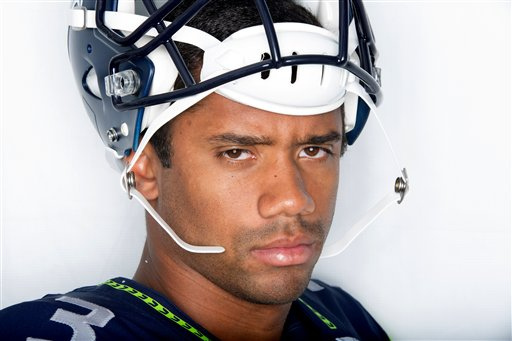The 3 Main Reasons The Pistol Offense Won’t Last In The NFL

Everyone is saying that the evolution of the quarterback position is upon us. There were always guys every few years who had a little extra athletic ability at the position, but now it seems every year there are a couple more. While Michael Vick certainly became the first superstar of this new age of quarterbacks capable of successful plays out of the pocket, the last two drafts have brought us Cam Newton, RGIII, Colin Kaepernick and Russel Wilson, all of whom seem to have more quarterback in them than Vick, making them more dangerous overall.
This evolution is not one of the quarterback, it’s one of the athlete.
While quarterbacks are the first to have a clear cut advantage in this human evolution, it is not a sustainable, long-term solution for teams in the NFL. There is no doubt that right now it can and is working. Just look at the 49ers run to the Super Bowl with Kaepernick, the Seahawks 11-5 season, seemingly out of nowhere, with Wilson behind center.
So why won’t this trend stay for long while these quarterbacks are making all-world defenses run in circles (see Demarcus Ware vs. RGIII)?
1. The Evolution Of The Athlete, Not The Quarterback
Athletes across all sports have clearly become bigger, stronger and faster.
It’s right now that these faster quarterbacks are still quarterbacks (unlike Vick) with the ability to turn on the boosters and escape from most defensive rushers. Once that play breaks down and there’s an opening, guys like Wilson and Kaepernick are able to exploit the opportunity for big plays with their feet. The fake handoffs are conspicuous enough to give that split second head start for RGIII to beat out defenders and turn the corner.
Exhibit A: Lebron James/Wilt Chamberlain
Lebron James is an example of this in the NBA right now, which most people would say there’s never been such a physical specimen, and they’d be right. Just like people were right when they said that about Wilt Chamberlain, and now there’s at least one 7 footer per team in the league.
But soon, more athletes of their caliber will be at those defensive positions and the balance of athleticism will shift back more evenly. Once more players in general catch up to this evolution, these quarterbacks won’t have such a drastic advantage when eluding pass rushers.
I’m not a college football fan by any means, but you can clearly tell when a college player is head and shoulders above the competition just on pure physical gifts alone. Once those players get to the NFL, that advantage is gone because everyone is that physically gifted.
Even the not-so-physically-gifted pro athletes are tremendously better than the top amateurs, just ask Brian Scalabrine’s naysayers.
2. Football Is A Cerebral Game
While the brute force of the players during the game may take away from the obviousness of this, football is a very strategic game. The plans that coaches put together are like a chess game. Similar to boxing, because of the physical nature of the execution of these plans, at the core of it, they are very much founded on solid strategy.
Because of this, it’s only a matter of time before defensive coordinators in the NFL are able to start putting together a sound defensive game plan to stop the pistol offense and these elusive quarterbacks. Combined with defensive players catching up in physical capabilities, there’s no way that a pistol offense will be able to carry a team for a full season in the next couple of years.
Exhibit B: The Wild Cat
That worked great for the dolphins for one season. A few other teams saw mild success with it, I guess…but now it’s extinct already.When did that debut, two years ago? Three at the most?
3. The Injury Factor
This is really the bottom line (to the argument and literally a team’s bottom line).
Yes, Adrian Peterson went from an amazing running back to a superhuman after tearing his ACL. This is the exception, not the rule. And I don’t think that players are out hoping to get hurt so they can spend the next 10 months in rehab to come back.
Exhibit C: Robert Griffin III
It didn’t even take Robert Griffin a full season before tearing up his knee. At the end, the man crumbled to the ground without being touched. What does Daniel Snyder think when he sees that? Definitely not, “let’s give this guy max money and bank our whole teams future for the next ten years on it.” Well, maybe, he does like to spend money.
How will this effect his game next year? The next 5 years? The next 10 years? Only time will tell, but the end of season one was not a good sign of things to come.
Teams won’t want to invest in a quarterback with that type of injury risk. That risk can also hinder other quarterbacks mentally when looking at an open field to take off into. And once it happens, I’m sure they’ll be thinking twice after that 10 month rehab stint to get back on the field.
What Do You Think Of The Pistol Offense?
Do you think this is a viable, long term solution? Is this the evolution of the game and the quarterback? Can teams really rely on this system to build a team around for true franchise success and not just a hot run one year?




